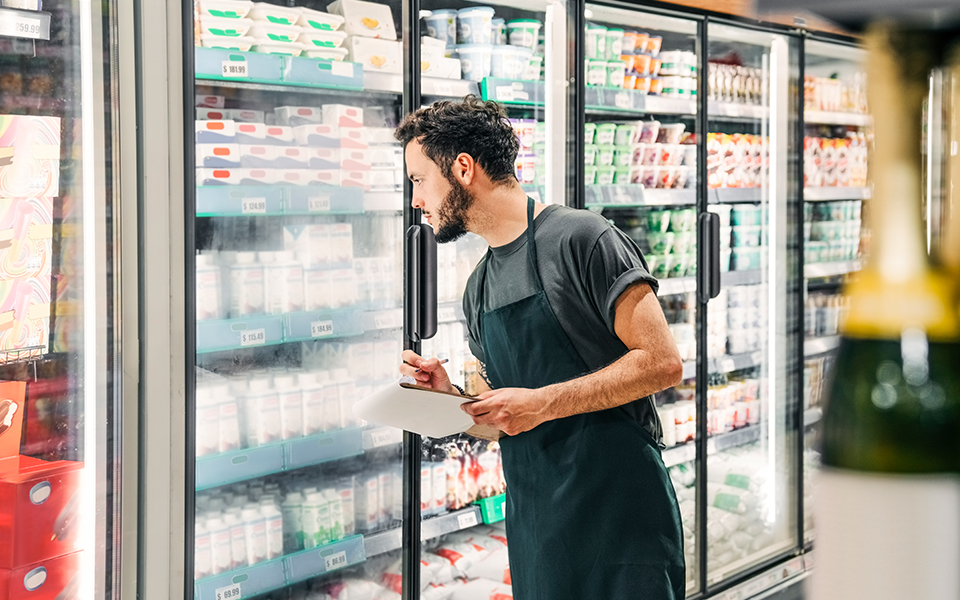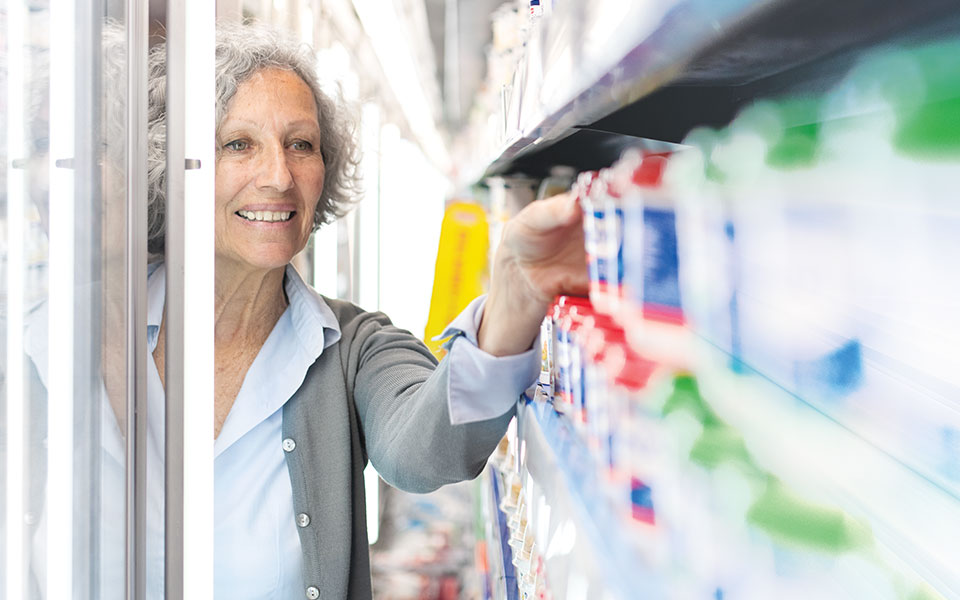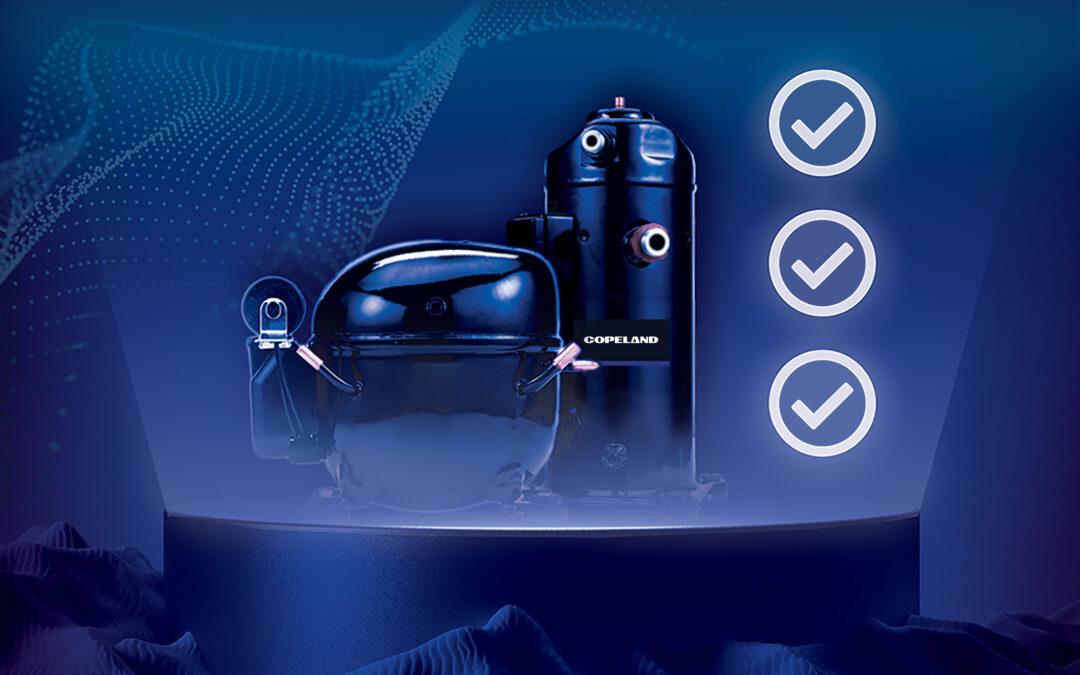*On June 1, 2023 Emerson’s Climate Technologies business became a new standalone company – Copeland. Though our name has changed, we are building on more than a century of HVACR innovation and industry leadership, and Copeland continues to offer the same products, industry stewardship, and learning opportunities you’ve grown to trust. Information found on this webpage posted before June 1, 2023 may contain our old name or branding, but you can be at ease knowing it was created with the knowledge and expertise of Copeland.
Until recently, CO2 refrigeration systems in the U.S. have been perceived as exceptions to the rule in commercial refrigeration. But as corporate sustainability initiatives and refrigerant regulations continue to reshape refrigeration decisions, many supermarket retailers are exploring CO2’s long-term potential. I recently contributed an article for Supermarket News in which I examined the regulatory, market and technological trends behind its increased adoption in the U.S. To view the full article, click here.

To date, most CO2 installations in the U.S. have been deployed as proofs-of-concept. Although there are some sustainably minded retailers that have made it the basis of their refrigeration strategy, CO2 hasn’t yet experienced the industry-wide acceptance we’ve seen in Europe. But that appears to be changing.
Among the environmental strategies identified to combat climate change, the greening of commercial and industrial refrigeration equipment has been recognized as an essential tactic of decarbonization plans and corporate sustainability initiatives. Food retail stakeholders are rethinking their approaches to refrigeration and transitioning away from legacy hydrofluorocarbon (HFC) refrigerants with high global warming potential (GWP). More than ever, retailers are evaluating long-term refrigeration strategies that support:
-
- Environmental, social and governance (ESG) efforts
- Energy efficiency and emissions reductions targets
- Net zero goals
Stage is set for wider adoption
With zero ozone depletion potential (ODP) and a GWP of 1, the natural refrigerant CO2 (aka R-744) is a proven alternative to higher-GWP HFC refrigerants. CO2’s inherent energy efficiency in most climates allows it to deliver direct and indirect emissions reductions — a lower total equivalent warming impact (TEWI). For more than a decade, CO2 refrigeration has become a leading sustainability strategy for European retailers. Today, that trend continues with adoption steadily increasing in the U.S. and other countries.
Per recent industry data, nearly 46,500 CO2 transcritical booster systems are currently installed worldwide.
If CO2 growth trends continue as they have from 2020–2021, the U.S. commercial refrigeration industry can anticipate CO2 adoption to increase up to 50% by 2025. This trend is expected to follow a similar trajectory throughout the next decade, with the possibility that the U.S. could potentially mirror E.U. levels of adoption.
Regulations drive down GWP levels
Global, federal and state regulations are steering the industry away from HFCs and toward lower-GWP alternatives. Using the Kigali Amendment to the Montreal Protocol as a framework, the next step in the HFC production and consumption phasedown schedule will be a 40% reduction in 2024 (compared to the baseline established in 2011–2013).
The passing of the American Innovation and Manufacturing (AIM) Act in 2020 restored the Environmental Protection Agency’s (EPA) authority to enforce HFC mandates and establish sector-based guidelines. As the EPA follows the Kigali Amendment’s HFC phasedown, decreased supplies will continue to drive up HFC refrigerant prices.
The California Air Resources Board (CARB) continues its progressive efforts to phase down HFCs in the state of California. Under its recently adopted rule, all new refrigeration systems containing more than 50 pounds of refrigerant installed in new facilities must use refrigerants with less than 150 GWP. For existing installations with equipment greater than 50 pounds of refrigerant, retailers can take a fleet approach toward reducing their carbon footprint. CO2 refrigeration is becoming a leading option for achieving these regulatory targets.
Technological improvements and emerging applications
The proliferation of CO2 refrigeration systems around the globe has given equipment manufacturers opportunities to improve compression, controls and valve technologies. Emerson is at the forefront of efforts to simplify system management and help the industry transition from legacy high-GWP HFC systems.
Electronic system controllers
Emerson’s new Lumity™ E3 supervisory control for CO2 systems is designed to manage CO2’s high pressures and system volatilities, greatly simplifying commissioning and system management during standard operation. These improvements minimize system complexities, alleviate the burden from technicians, and provide peace of mind to end users.
Integrated CO2 transcritical booster system components
CO2 transcritical booster systems — where both medium- (MT) and low-temperature (LT) circuits run on R-744 — are the most widely adopted CO2 architectures in medium- to large-format food retail stores. Emerson is helping original equipment manufacturers (OEMs) and operators to ensure the system integration needed to maximize reliability and performance, including: compressors, electronic expansion valves (EEVs), high-pressure valves and an electronic controller.
Warm ambient strategies
CO2 transcritical booster systems are subject to declining efficiencies in warm ambient climates, but manufacturers have developed a variety of strategies to maintain efficiency levels.
-
- Adiabatic gas coolers — keep the refrigerant below its critical point for as long as possible to maximize system efficiencies
- Parallel compression — compresses excess flash gas at higher pressure via a dedicated intermediate- stage compressor, resulting in 8–10% annualized efficiency gains
- Mechanical sub-cooling — provides increased refrigerant enthalpy
- Gas ejectors, liquid ejectors — optimize efficiency
- Low superheat of MT evaporators — delivers year-round efficiency improvements
Increasing our commitment to CO2 innovation
Emerson is expanding CO2 labs, testing facilities and development capabilities to further CO2 adoption and support our OEM and end user partners. As the market for CO2 refrigeration continues to expand, the proliferation of new products is creating economies of scale, which lower the costs and complexities of implementing CO2 technologies. To learn more about improving the efficiency, usability and simplicity of CO2 systems, please visit our CO2 resources hub.

Electrical component considerations for A2L system safety
Electrical component considerations for A2L system safety As a new refrigerant category in the...

A2L refrigerant regulation updates: what you need to know today
Preparing for the approval and safe use of A2Ls in commercial refrigeration applications The move...

Address Efficiency Mandates with Compression Technologies
Strategies for complying with DOE and ENERGY STAR® in self-contained and remote condensing units...
